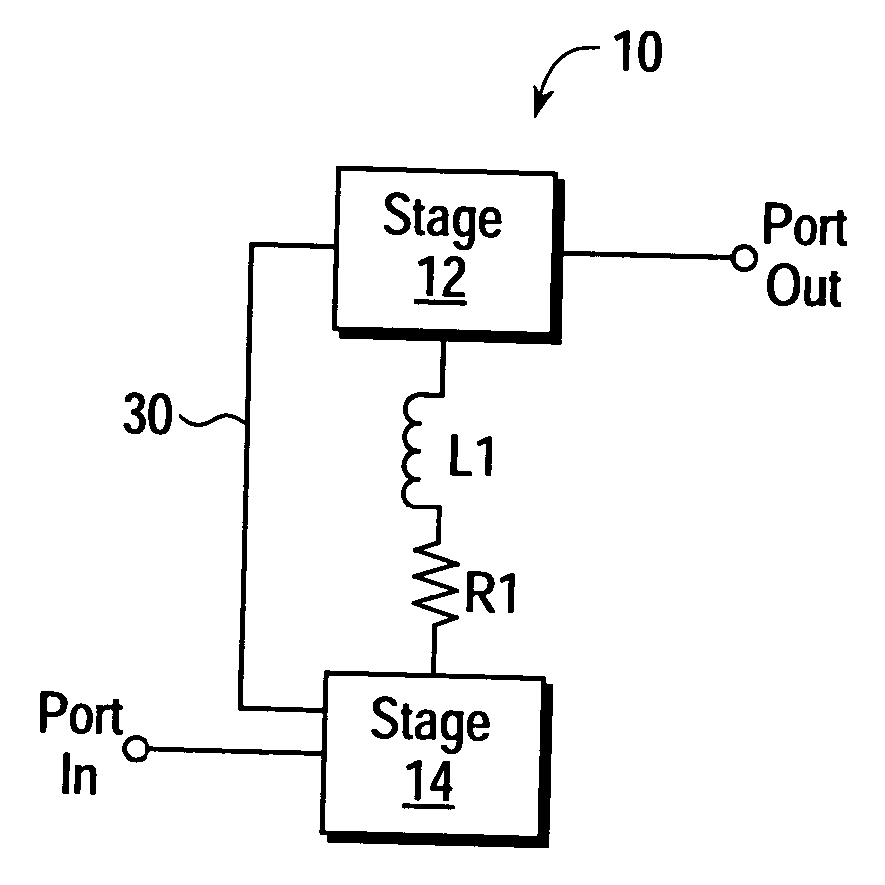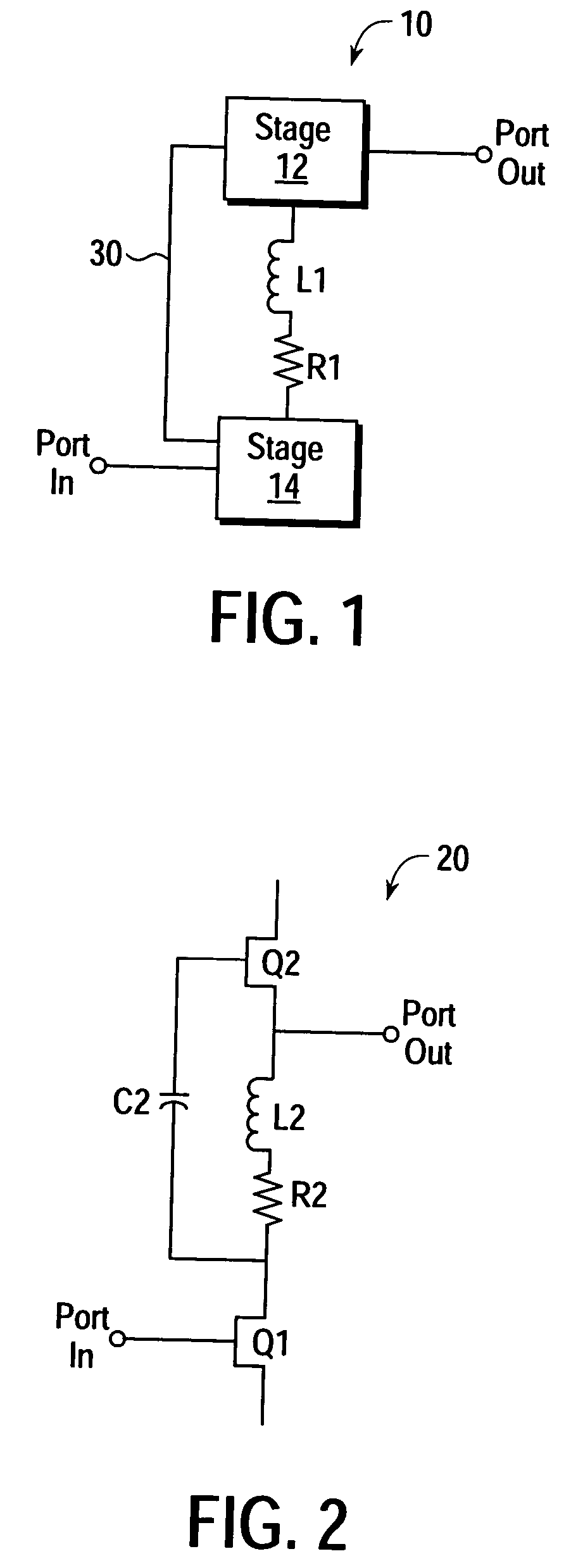Two-stage amplifier with series L-R coupling network
a two-stage amplifier and coupling network technology, applied in power amplifiers, amplifiers, amplifier input/output impedence modifications, etc., can solve the problems of reducing the overall gain of the two-stage amplifier, power dissipation in isolation resistors, and unsatisfactory high power loss, so as to avoid excessive power dissipation and/or negative impact on overall gain
- Summary
- Abstract
- Description
- Claims
- Application Information
AI Technical Summary
Benefits of technology
Problems solved by technology
Method used
Image
Examples
Embodiment Construction
[0009]FIG. 1 shows an amplifier 10 according to the present teachings. The amplifier 10 includes a pair of stages 12 and 14 that are interconnected via a series L-R network that includes an inductor L1 and a resistor R1. The inductor L1 is selected to provide AC decoupling of the stages 12 and 14, thereby maintaining the gain of the amplifier 10. The resistor R1 is selected to provide for the stability of the amplifier 10. The stages 12-14 have an interstage coupling 30.
[0010] In one embodiment, the value of the inductor L1 is selected to be sufficiently large so as to decouple the stages 12 and 14 at the lowest desired operating frequency of the amplifier 10. This yields a value for L1 for which the amplifier 10 gain is maintained down to the lowest frequency of interest. The value of the resistor R1 is increased above zero ohms until the amplifier 10 is unconditionally stable.
[0011]FIG. 2 shows a common-source / common-drain amplifier 20 according to the present teachings. The amp...
PUM
 Login to View More
Login to View More Abstract
Description
Claims
Application Information
 Login to View More
Login to View More - R&D
- Intellectual Property
- Life Sciences
- Materials
- Tech Scout
- Unparalleled Data Quality
- Higher Quality Content
- 60% Fewer Hallucinations
Browse by: Latest US Patents, China's latest patents, Technical Efficacy Thesaurus, Application Domain, Technology Topic, Popular Technical Reports.
© 2025 PatSnap. All rights reserved.Legal|Privacy policy|Modern Slavery Act Transparency Statement|Sitemap|About US| Contact US: help@patsnap.com


